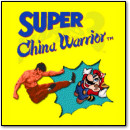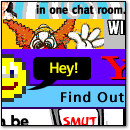[ Retro Scan of the Week ] Computer Shopper Debut
Monday, September 22nd, 2014 “The most divisive magazine in the USA.”
“The most divisive magazine in the USA.”
Veterans of the computer scene will no doubt recall Computer Shopper, a massively large (11″ x 14″, later 10″ x 13″) and thick (usually around 1.25″) monthly publication that mostly ran classifieds and paid advertisements for PC vendors. The magazine ended its print run in 2009, 30 years after it launched.
I only know when it launched because of this advertisement for the launch of Computer Shopper that appeared in the November 1979 issue of Byte. It’s interesting to see a legend at its birth.
I was never a huge fan of Computer Shopper, since it was essentially a month’s worth of computer junk mail stuffed into an awkward and almost unreadibly-large magazine format. But I did respect it as a mainstay of the computer industry — as familiar as a phone book and as timely as a newspaper. May she rest in peace.
Discussion Topic of the Week: Did you ever read (or more accurately, peruse) Computer Shopper? What are your memories of the publication?
[ Retro Scan of the Week ] MacCharlie’s FrankenMac
Monday, January 14th, 2013 I’d like to have heard Steve Jobs’ reaction when he first saw this.
I’d like to have heard Steve Jobs’ reaction when he first saw this.
Long before Boot Camp and Parallels, if you wanted to run IBM PC compatible software on your Mac, you had to strap on this unholy contraption — the Dayna Communications MacCharlie.
If I recall correctly, the MacCharlie was essentially an IBM PC clone in a beige box that hooked to the Mac’s serial port. As a result, the Mac merely served as a serial terminal for the MacCharlie via custom terminal software running on the Mac. That’s not a particularly efficient setup, but the lack of expansion ports on the original Macintosh meant that there was no other reasonable point of entry.
Since it worked through the serial port, the MacCharlie could only run text-based MS-DOS applications. Conveniently, the MacCharlie shipped with a keyboard extender that added the IBM PC’s special function keys and a numeric keypad to the Macintosh keyboard.
Discussion Topic of the Week: Have you ever used a hardware system adapter (something that lets you use software from one platform on another through hardware, not software emulation) for any computer system?
[ Retro Scan of the Week ] Altos Computer Systems
Monday, December 31st, 2012[ Retro Scan of the Week ] Finally…a 1200 Baud Modem
Monday, November 19th, 2012You too could be the proud owner of this Radio Shack TRS-80 DC-2212 1200 baud modem for the low, low price of $399.95 (about $859.81 in 2012 dollars).
…If you traveled back in time with the proper currency, that is. But I wouldn’t recommend it.
I recently bought a cable modem that is the equivalent of a 150,000,000 baud modem. It cost $70 in 2012 dollars. Not bad for progress.
Discussion Topic of the Week: What speed was you first modem?
[ Retro Scan of the Week ] A 1985 Solid State Drive
Monday, November 5th, 2012Back in January, I traced the evolution of the Solid State Drive from its 1978 origins to the present in a PC World slideshow. From that experience, I learned that SSDs, as a product class, were far older than most people realize.
Case in point: Seen here is an advertisement for a 1985-era SSD called the SemiDisk. The company behind this early SSD, SemiDisk Systems, sold a wide range of “disk emulators” (as they were called back then) for platforms like S-100 bus systems, the TRS-80 Model 2, and the IBM PC. All of them used solid-state RAM chips to achieve read and write speeds far beyond those of rotating platter drives at the time.
The 2 megabyte SemiDisk for the IBM PC retailed for $1,795 in 1985. That’s about $3,860 today when adjusted for inflation. Amusingly, at that vintage price rate — about $1,930 per megabyte — a 256 GB SemiDisk SSD would cost over $494 million today. Yep, that’s a 494 followed by six zeroes.
Of course, you can buy a 256GB flash-based SSD right now for under $180. Not bad.
Discussion Topic of the Week: When did you buy your first solid state PC drive? How big was it?
[ Retro Scan of the Week ] The Osborne 1
Monday, June 25th, 2012 Two out of three doctors recommend Osborne 1 for muscle fatigue.
Two out of three doctors recommend Osborne 1 for muscle fatigue.
We’ve come a long way from what many consider to be the first commercial portable PC, the Osborne 1 (seen here), and the recently announced Microsoft Surface tablet.
Here’s a brain twister for you. If you packed a case the size of the Osborne 1 (think small suitcase) with Surface-sized portable tech, how powerful would the machine be?
Discussion Topic of the Week: What was your first portable computer? When did you get it?
[ Retro Scan of the Week ] Software Piracy
Monday, February 9th, 2009Heh. And you thought digital piracy was a new problem. It’s actually as old as the PC software business itself. Some of the earliest evidence of this comes from a famous February 1976 open letter to the Homebrew Computer Club in which Bill Gates (then “General Partner” of a small company called Micro-Soft) protested the rampant “theft” of his company’s popular Altair BASIC.
Reflect on that date for a moment: February 1976 — less than a year after the Altair 8800 launched the personal computer revolution, people were already illegally copying Microsoft products with great abandon. (Some things never change.) Of course, selling pre-programmed software for personal computers was a new concept back then. And heck, personal computers were a new concept back then.
But as time passed and PCs grew in influence, the piracy problem didn’t go away. In fact, it continued as a hot-button topic throughout most of the 1980s. BYTE magazine devoted its May 1981 issue to the subject, commissioning its regular cover artist, Robert Tinney, to provide a visual hook for the monthly theme. Meditating on “software piracy,” Tinney concocted a potent and iconographic image of a fierce viking ship cutting through rough seas, its massive floppy disk sail standing at full mast. To this day, the image (seen above) remains Tinney’s most famous illustration from the BYTE years.
If his prints of this image hadn’t sold out long ago, I’d buy one in a heartbeat.
Discussion topic of the week: Do you pirate commercial software? Why or why not?
If you use this image on your site, please support “Retro Scan of the Week” by giving us obvious credit for the original scan and entry. Thanks.










